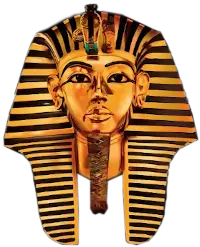
spent 20 years as a pupil under Plato, that he never went to Egypt and that Alexander the Great gave him the money to secure the vast number of books which are attached to his name. But history also tells us that Plato was a philosopher and that Aristotle was a scientist and consequently we are forced to ask the question: why should a man like Aristotle waste 20 years of his life under a Teacher who was incompetent to teach him? These circumstances have led to the suspicion that Aristotle must have spent the greater part of those 20 years in advancing his education in Egypt and in accompanying Alexander the Great on his invasion of Egypt, when he got the opportunity to ransack the library at Alexandria and carry off all the books which he wanted. The story of history does not make much sense; but unfortunately throws a cloud of darkness over the life of Aristotle.
(ii) Another discrepancy is to be found in connection with three lists of books said to belong to him, but which differ in source, in date and in quantity, (a) His own list which must receive the date in which he lived: the 4th century B.C. This contains the smallest number of books. (b) A list from Hermippus of Alexandria two centuries later, i.e., 200 B.C. containing 400 books and (c) A list from Arabian sources, compiled at Alexandria, three centuries later, i.e., 1st century A.D. containing a thousand books. One is forced to ask the questions: Did Aristotle write a thousand books in his life time? How has his small list increased after his death to 400 after the lapse of two centuries, and to one thousand after the lapse of five centuries? These circumstances make the authorship of Aristotle very doubtful, for it is incredible that a single individual could write a thousand books on the various fields of science in a single life time.
2. The doctrines of Aristotle have all been shown to originate from the Egyptian Mystery System
(i) The doctrine of Being in the metaphysical realm has been explained as the relation between potentiality and actuality, which acts according to the principle of opposites. The Egyptians were the first scientists to discover the principle of duality in nature and therefore represented it by male and female Gods and by pairs of pillars in front of their temples. This is the source of this doctrine.
(ii) In the proof of the existence of God, Aristotle used two doctrines, (a) Teleology, showing purpose and design in nature as the work of an Intelligence and (b) the Unmoved Mover. Both doctrines have been traced to the creation story of the Memphite Theology of the Egyptians where it is shown that creation moved from chaos to order and indicated the work of an Intelligence; and also where Atom the Demiurge and Logos while sitting unmoved upon the
Topics
Greek Philospohy is Stolen Egyptian Philosophy
The Memphite Theology is the Basis of all Important Doctrines of Greek Philosophy
Greek Philosophy was Alien to the Greeks
Greek Philosophy was the offspring of the Egyptian Mystery System
The Egyptians Educated the Greeks
The Curriculum of the Egyptian Mystery System
The Pre-Socratic Philosophers and the teaching Ascribed to them
The Athenian Philosophers
1. Socrates
2. Plato
3. Aristotle